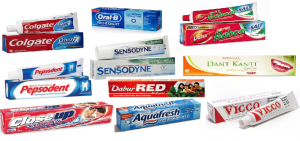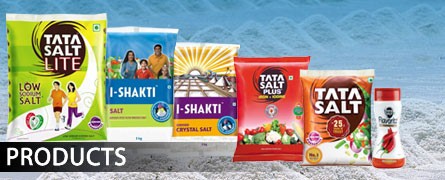Definition of Parity Product is when a brand of good has sufficient amount similarities with other brands of the same category that it is measured as ready substitute. In other words a parity product can be substituted easily. A parity product is functionally equivalent to a product offered by a competitor; toothpaste, shampoo, bath soap, grocery items such as pulses, salt, sugar, spices, atta, oil etc. Each brand may add different ingredients or make their version different, the packaging will be different, brand name will be different – the fact is it still remains largely the same product.
Parity means sameness or equality. In marketing substitution happens when functionality is same. One biggest fact in marketing world is no two products are the same. Marketers opt for product differentiation or price differentiation. Product differentiation is the process of distinguishing a product from others, to make it stand out from other competitive brands for a target market. This involves differentiating it from competitor’s products as well as a firm’s own products. The concept was proposed by Edward Chamberlin in his 1933.
Perceived brand parity relates to the perception among consumers that all major alternatives in a product class are similar. Though high levels of brand parity greatly concern many marketing professionals, very little empirical research has been published on this topic.
The primary goal of a marketing program is to create a customer base that is cognitively brand loyal and insensitive to price competition. However, such a customer base is utopian, very difficult to develop in the absence of perceived differences between major brand substitutes. It is not possible that a customer would be willing to pay a higher price for a particular brand when the major alternatives in a product category are all the same. Even developing a preference for a specific brand may be very difficult when all of the brands in the particular category are seen as being alike.
In the meantime, the competition keeps increasing for any category product. The number of products continually keeps expanding on the shelf which leads to cluttering of shelves. Due to the rise of private labels and smaller retail formats, marketers are forced to think and take increasingly complex decisions about which products to place where and how to properly activate them. Another fact is that sales teams are often not equipped to make the right trade-offs because of the fast changes that take place in the market. As a result, shelves are muddled, promotions are inadequately executed, brands struggle to stand out, and sales productivity ratios stagnate.
Another fact is, customers appear to be insensitive to marketplace information in circumstances of high brand parity. There is a wide gap between perceived brand differences and information search because majority of customers are less receptive to marketing communications. Parity perceptions are high, and customers do not even give advertisers the opportunity to present information which could change the parity perceptions. So battling brand parity gets mystified by its own very existence.
For example, when you go to buy table salt you find these brands along with many other brands on the shelves: Tata salt, Captain Cook, i-shakthi, Aashirvadh, Annapurna, Surya salt, Sambhar salt, Nirma shudh, Patanjali, Akar salt, Catch and Saffola salt it is so confusing which one to buy….salt is one of the most commoditized brands. Tata Salt, which contributes about 19 per cent to the total turnover of the parent company – Tata Chemicals, is aiming at a growth much higher than what it has achieved in the past three years. Expanding its communication from the emotional tagline ‘Desh Ka Namak’ to going functional and proving the purity of the salt, the brand has changed its communication statement with its new advertisement trying to connect emotionally with the customers. The very purpose of advertising is to differentiate the brand in customer’s minds.
Another common item in parity brands belongs to toothpaste category. In India, brand Colgate has been one of the most trusted brands for decades. It is not only the older generation which grew up with Colgate; it is a first brand, even for the young, when it comes to oral care. The brand has faced tough competition from time to time and has fought back effectively to regain its market share. In the 1960s and 1970s, Geoffrey Manners’ Forhans was the challenger brand but it is completely forgotten today. Binaca, which later became Cibaca and finally got taken over by Colgate, was another challenger.
Despite the strong brand and Colgate’s focus on oral care, in the late 1980s Close-Up changed the way toothpaste looked and felt in the mouth. High on freshness ingredients, the red transparent look and the youth-centric approach gave Colgate some sleepless nights at the time. Close-Up gained a significant share of the market, forcing Colgate to launch a similar product and alter its strategies for some time. Unilever also attacked Colgate on the ‘healthy gums’ platform with Pepsodent, thereby attacking on two fronts. Currently, despite Colgate accounting for about 55 per cent share of the toothpaste market, Pepsodent and Close-up are still sneering at its heels with alternating attacks. All three – Colgate, Pesodent and Close-up are challenged by Vicco’s Vajradanti, Patanjali’s Dantkanti and Oral B.
Buyers of parity products which are most often commoditized products see little functional difference among them. Selling a commoditized product with differentiated supplementary services such as after-sales service, packaging differentiation, price differentiation and advertising differentiation can appeal to buyers willing to pay a premium for the convenience. It is indeed a great task for marketers to differentiate parity products.














































